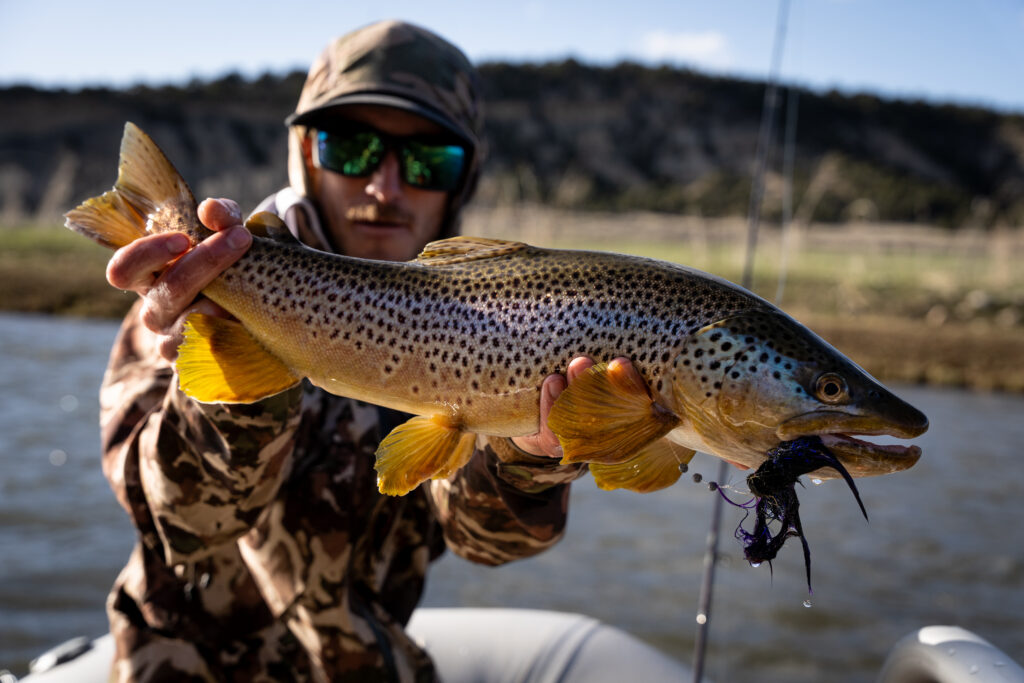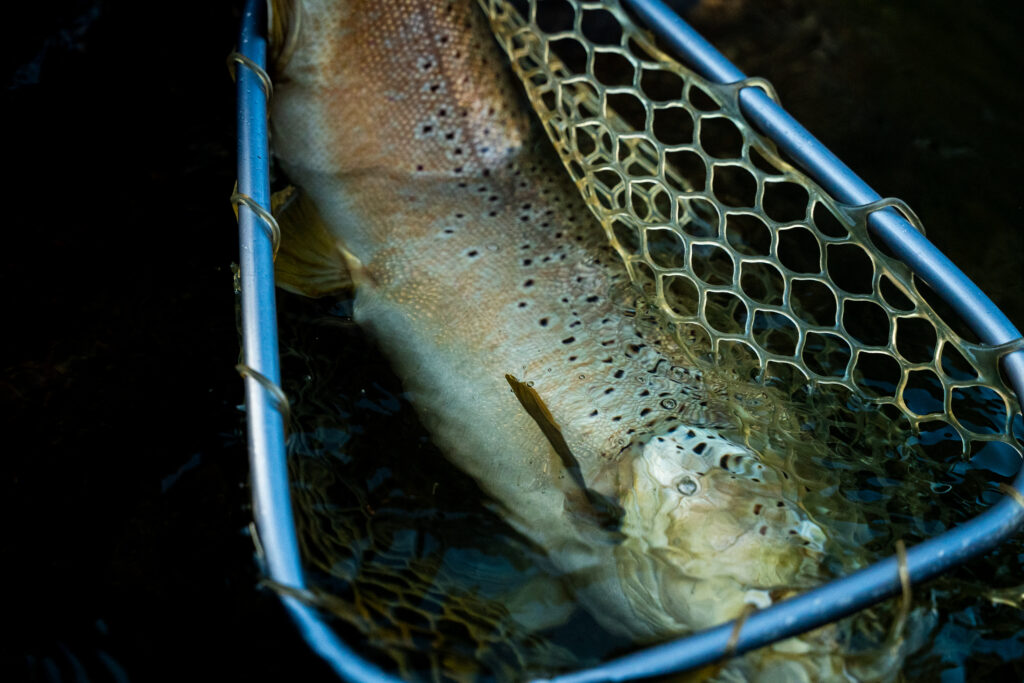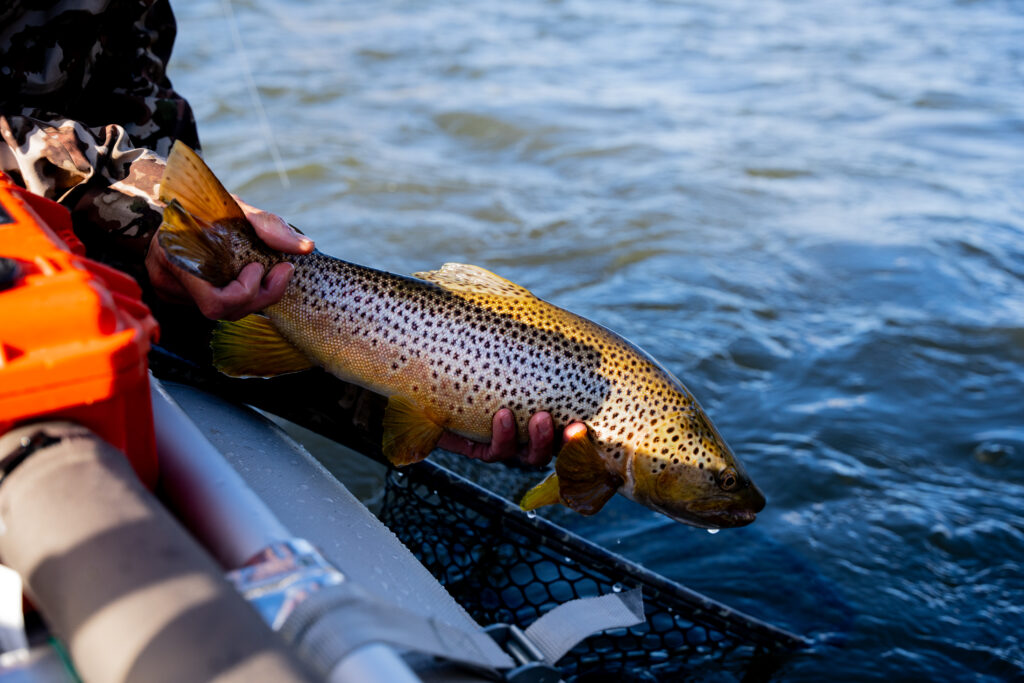A Glimpse into Streamer Fly Fishing

Streamer fly fishing is a thrilling way to target larger fish, but it requires a variety of techniques to be effective. Whether you’re new to the practice or looking to refine your skills, here are some key streamer fishing techniques that can elevate your game on the water.
1. The Strip Retrieve
One of the most common and effective methods in streamer fishing is the strip retrieve. This technique mimics the erratic movement of baitfish and crawfish enticing predatory fish to strike.
- How to Do It: After casting your streamer, allow it to sink briefly. The depth can be the most important part. In order to find the right water column use a combination of sinking lines and different weighted streamers.
- Retrieve it by making quick, short strips of the line. Experiment with the speed and cadence of your retrieve—sometimes a fast retrieve will trigger a chase, while a slower approach can also be effective, especially in cooler water. A good rule of thumb is the colder the water the slower the retrieve.
- Tip: Understand what type of movement you are mimicking. Is it a sculpin, crayfish or bait fish. Their movement varies so yours should too.
2. The Swing Method
The swing technique involves letting your streamer drift through the current, allowing it to imitate a wounded or fleeing fish. This method is particularly effective in rivers with current.

- How to Do It: Cast across the current and let the streamer swing downstream. As it moves, retrieve slowly to keep tension on the line, but allow the current to do most of the work.
- Tip: Focus on structure—fish often hide behind rocks or along the edges of current. The swing method can draw them out to investigate.
3. The Jigging Technique
Jigging can be highly effective, especially in deeper waters. This technique mimics a baitfish trying to escape, drawing in curious predators.
- How to Do It: Cast your streamer and let it sink. Then, use short, sharp strips to raise and lower the streamer in the water column. This mimics a struggling fish and can provoke aggressive strikes.
- Tip: Vary the length and speed of your strips to find what the fish respond to best.

4. The Bounce Retrieve
This technique works well in areas with structure, such as rocky bottoms or submerged logs. The bounce retrieve creates a natural, erratic movement that can be irresistible to fish. Often times we like to use this when fishing a sculpin pattern.
- How to Do It: Cast your streamer and allow it to sink. Retrieve by bouncing the line—strip it quickly, then let it drop back down. This simulates a fish that is darting around obstacles.
- Tip: Pay attention to your surroundings. If you hit a snag, don’t be afraid to pause and let the streamer sit for a moment—this can provoke a strike. Jigged streamers can help avoid snagging the bottom.
5. The Chugging Method
Chugging is an exciting technique that involves making the streamer “pop” on the surface, mimicking a fleeing fish. It’s especially effective during low-light conditions or when fish are actively feeding on the surface.
- How to Do It: Cast your streamer and retrieve it with a series of quick, jerky strips. The goal is to create a splash or disturbance on the water’s surface.
- Tip: Use larger, more buoyant streamers for this method to maximize the splashing effect.
6. The Cross-Currents Technique
Utilizing the currents can help you present your streamer in a more natural way. This technique is especially effective in rivers and streams where fish are likely to be positioned to ambush prey.
- How to Do It: Cast your streamer upstream at an angle and let it drift down while retrieving. This presents the streamer at various depths and angles, increasing your chances of a strike.
- Tip: Adjust your angle and retrieve speed based on the current and the behavior of the fish.

Conclusion
Mastering different streamer fishing techniques can significantly improve your success on the water. Each method has its time and place, so don’t hesitate to experiment with different retrieves and presentations until you find what works best for the conditions and species you’re targeting. With practice and patience, you’ll be reeling in some impressive catches in no time.
